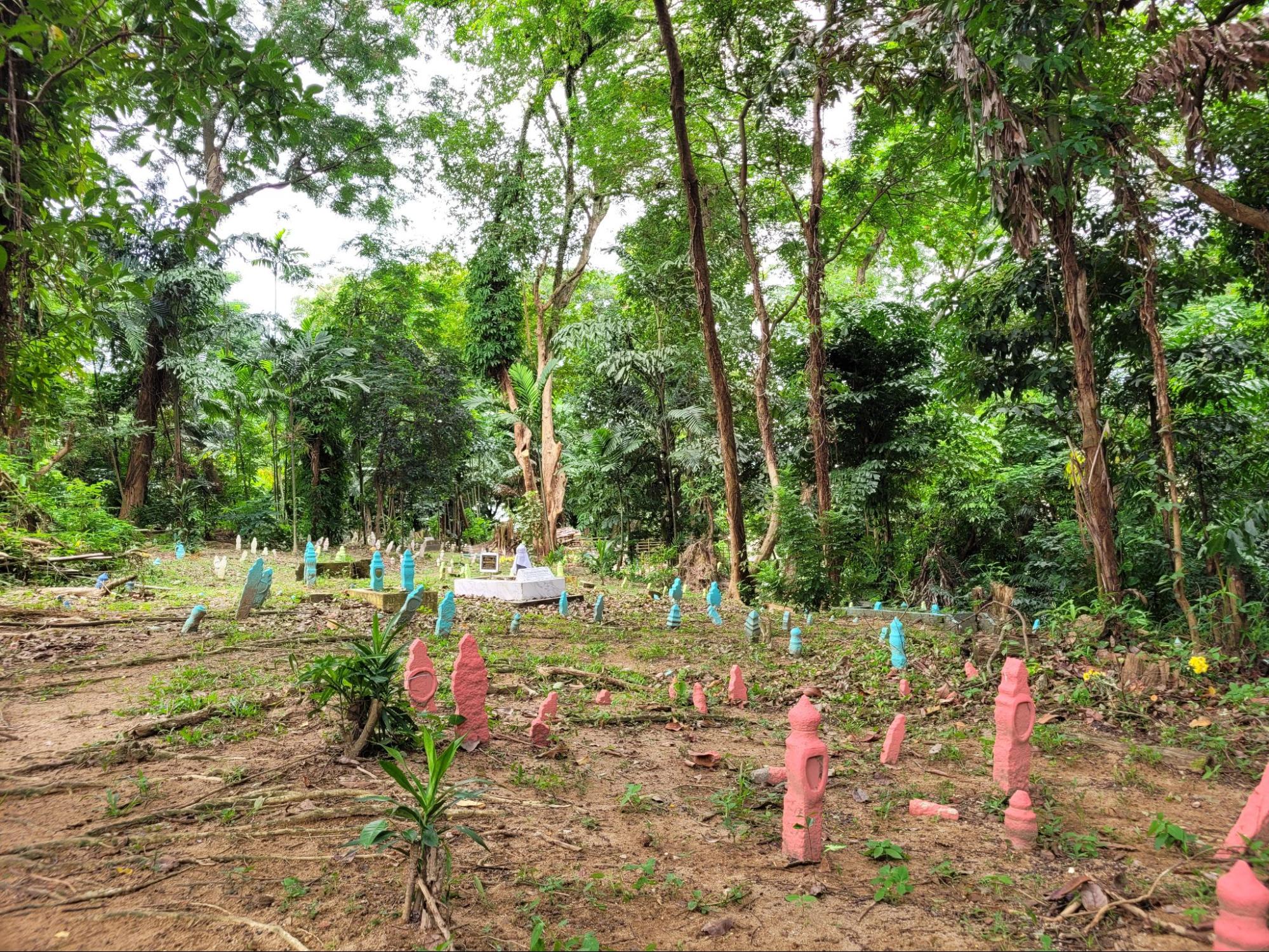
Kubor Kassim (translated as Kassim cemetery from Malay) exemplifies Singapore’s valuable and unique, yet essentially vulnerable, cultural heritage. Sited in a contested land, surrounded by private properties, and in an area of Singapore particularly affected by the shortage of land and population pressures, it qualifies for the label as a ‘site at risk of disappearance’. The one-century old Kubor Kassim is part of a collective of cemeteries in Eastern Singapore called the Mohammedan cemeteries. The land occupied by Kubur Kassim is believed to have served as a burial ground for Muslims in the area even before Kassim’s endowment. Endowed by Ahna Mohamed Kassim bin Ally Mohamed, a cargo boat and steam launch owner, it opened in 1921 and has over 3,000 graves. When Ahna Kassim passed away in 1935, the land was given to a group of trustees to manage.
Many villagers from kampung Pachitan, a village nestled between kampung Eunos and Kembangan (today full-fledged urban neighbourhoods with tens of thousands of residents and train stations), were buried at Kubor Kassim. The kampung (small ‘village’ in Malay) had many Javanese settlers who moved to Singapore after the Japanese occupation after World War II. Today, most of the graves in Kubor Kassim are anonymous or have lost their identification engravings and are designated with standard burial markers.
Apart from unidentified graves, Kubor Kassim has also elaborate graves, in some cases with individual shrines, decorative elements and private fences: for instance, the tomb of Dr. Hafizudin Sirajudin Moonshi, former Singapore Municipal Commissioner and a prominent leader of the Indian Muslim community, recognised for establishing the first clinic by a Muslim in Singapore, and Ms. Che Lembek binte Abdin, former headmistress of Kampong Glam Girl’s School. The cemetery also houses Khanqah Khairiyyah, a surau (‘prayer house’ in Malay) where religious classes are conducted, and a meeting place for a local tariqa (a ‘Sufi Muslim order’ in Arabic). Some of Kubor Kassim’s tombs seem to be dedicated to the orang bunian, a kind of super-natural human-like beings often portrayed in Malay folklore.
Closed for burials since the end of the 1980s, the land where the cemetery sits is state land, managed by Singapore Land Authority (SLA). However, some descendants of Ahna Kassim are contesting governmental ownership. Today, as for the last few decades, the cemetery is maintained by the combined, yet often asymmetric, efforts of private supporters (e.g., caretakers, community and volunteer groups, Kassim family members), MUIS, Majlis Ugama Islam Singapura (the Islamic Religious Council of Singapore), and public agencies such as NEA, the National Environment Agency. Cemeteries typically use a considerable amount of space, and particularly older ones, are typically located in premium and highly-sought land, often subjected to redevelopment. In the Urban Redevelopment Authority (URA) 2019 master plan, the site where Kubor Kassim sits was earmarked for future residential development, which could include flats, condominiums, and detached, semi-detached and terrace houses. This potential threat to its existence is not exclusive to Kubor Kassim but to most of Singapore’s cemeteries, regardless of faith. In the handling of faith matters in Singapore, pragmatism is emphasised, and all religious places are treated equally – including burial grounds.
Map of Kubor Kassim

Please select a location to learn more.


